#Angkor civilization
Explore tagged Tumblr posts
Text
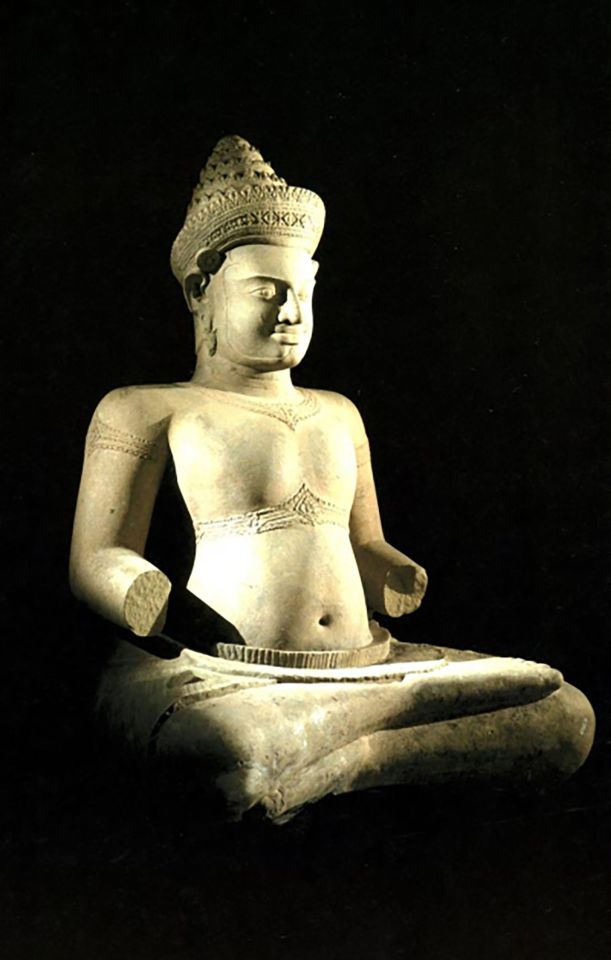

Family of Late US billionaire Agree to Return Looted Artifacts to Cambodia
The family of late American pipeline billionaire George Lindemann has agreed to return 33 looted artifacts to Cambodia, according to the US Attorney’s Office, a decision described as “momentous” by the Southeast Asian country.
The collection includes statues of deities, angels and demons from the 10th and 12th centuries from Koh Ker, the ancient capital of the Khmer kingdom, and from the famous Angkor Wat temple, the US Attorney’s Office for the Southern District of New York said on Tuesday.
In a statement it said the family’s decision to return the artifacts was voluntary. Lawyers for the Lindemann family did not immediately respond to a request for comment.
Cambodia’s archaeological sites suffered widespread looting during civil conflicts from the 1960s to 1990s and its government has spent years pursuing the return of antiquities, some of which it says are on display in American museums.



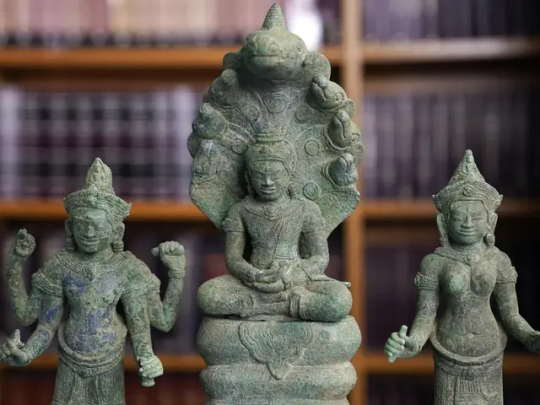
The United States repatriated 27 smuggled antiquities to Cambodia in 2021, including Hindu and Buddhist statues valued at about $3.8 million and last year returned 30 more including several that were more than 1,000 years old.
The artifacts that were held by the Lindemann family are expected to be repatriated later this year, said Bradley Gordon, a lawyer advising Cambodia on the repatriations and head of its investigation team.
He said he understood the Lindemann family had paid more than $20 million for the artifacts.
Cambodia’s Ministry of Culture and Fine Arts in a statement said the Lindemann family’s decision to return the artifacts set “an excellent and proper example for other museums and private collectors.”


In a June speech to the American Chamber of Commerce, two months before becoming Cambodia’s leader, Prime Minister Hun Manet said the antiquities were national treasures and more than just historical relics.
“They are the blood in our veins and the soul in our hearts that forge the identity of being Khmer… our heritages define who we are and who we will be,” he said.
US authorities have spent more than a decade working on locating artifacts from Cambodia and have so far repatriated 65. In 2019, art dealer Douglas Latchford was indicted for wire fraud and other crimes related to selling looted Cambodian artifacts, but the charges were dismissed after his death.


#Family of Late US billionaire Agree to Return Looted Artifacts to Cambodia#looted#stolen#theft#George Lindemann#Douglas Latchford#Angkor Wat temple#Koh Ker#ancient artifacts#archeology#archeolgst#history#history news#ancient history#ancient culture#ancient civilizations#ancient art
29 notes
·
View notes
Text











Prasat Hin Phimai (Phimai Historical Park) pre-Angkor Wat architecture in Thailand.
2 notes
·
View notes
Text


The Temple of Angkor Wat
Built sometime in the 12th century the area is 162 hectares (400 acres) which is 3 times the size of the Vatican. (this place is huge!)
Of the tools for construction and processing - a pickaxe, shovel, cart and the hands of grateful workers.
Every inch of this temple is intricately carved as depicted in the 2nd image. The detail and care put into the construction of Angkor Wat is an inspiration 900 years later.
5 notes
·
View notes
Video
youtube
All 13 wonders I built in The Head of Cyrus Challenge in the order they ...
#youtube#civilization 6#monthly challenge#wonders#pyramids#hanging gardens#apadana#petra#colossus#taj mahal#alhambra#great lighthouse#mausoleum at halicarnassus#kilwa kisiwani#angkor wat#etemenanki
1 note
·
View note
Text
Mỹ Sơn (pronounced Mee Sahn) Sanctuary showcases the remains of a now-extinct Indian-Hindu Kingdom of the Cham people, which settled southern and central Vietnam between the 4th and 13th centuries. This site was the former religious and political capital of the civilization for most of its existence. Despite being lesser known, Mỹ Sơn Sanctuary offers historical and cultural knowledge on par with Angkor Wat.
Mỹ Sơn is home to 71 temple towers, built for the Hindu divinities such as Krishna and Vishnu, but above all Shiva. The tower temples were constructed over ten centuries of continuous development. The skill of the bricklayers is still marveled to this day, as the exact techniques used are still unknown. The original bricks are remarkably well preserved, despite being ravaged by war and 15 centuries of time.
A Linga and Yoni lay at the center of many of the oldest temples, symbolizing the balance between male and female. The linga church is the oldest example of a ruling theocratic power in Southeast Asia.
French archeologists found the site in the 20th century and began conservation efforts, although it's worth mentioning that a number of statue heads were stolen and brought back to France. During the Vietnam War, the Viet Cong used My Son as a military base, and were subsequently bombed by American soldiers, where the site suffered the most significant damage due to combat.
Mỹ Sơn Sanctuary has been recognized by UNESCO since 1999.
12 notes
·
View notes
Text
Cosmic Architecture
🏛️🌠 How Ancient Civilizations Built the Stars into Their Structures 🔭🌍
Ever wondered why certain ancient structures seem to align perfectly with celestial events? It's not just coincidence - our ancestors were master sky-watchers who integrated astrology and astronomy into their architecture. Let's explore this fascinating fusion of earth and sky!
🔍 The Zodiac in Stone:
Great Pyramid of Giza 🔺
Aligned with cardinal directions
Air shafts point to important stars in Orion and Draco constellations
Possible connection to Orion's Belt (Osiris in Egyptian mythology)
Angkor Wat, Cambodia 🛕
Layout mimics the constellation Draco
Aligned with solar equinoxes
Possible representation of the Hindu cosmic ocean
Stonehenge, England 🗿
Aligns with summer solstice sunrise
Possible lunar calendar function
Theories suggest connections to eclipses and planetary cycles
Chichen Itza, Mexico 🐍
El Castillo pyramid aligns with Venus cycles
Equinox shadow resembles a serpent (Kukulkan)
Observatory (El Caracol) tracks Venus, equinoxes, and solstices
Newgrange, Ireland 🌄
Winter solstice sunrise illuminates inner chamber
Possible lunar alignments
Spiral carvings might represent celestial movements
🤯 Mind-Blowing Connections:
Sacred Geometry: Many structures use the Golden Ratio (1.618), mirroring patterns found in nature and the cosmos
Astronomical Precision: Some alignments are so accurate they still work thousands of years later!
Global Phenomenon: Cultures worldwide, often with no contact, developed similar astrological architecture
🔮 Astrological Implications:
Taurus ♉ - Earth Sign Connection: Many of these structures emphasize groundedness and permanence, reflecting Taurus energy
Leo ♌ - Solar Alignments: Solstice alignments might relate to Leo's ruling planet, the Sun
Sagittarius ♐ - Quest for Knowledge: The explorer spirit of Sagittarius reflects in the astronomical curiosity of these builders
Capricorn ♑ - Enduring Structures: The longevity and ambition of these projects resonate with Capricorn traits
Aquarius ♒ - Visionary Innovation: The forward-thinking, almost alien-like precision embodies Aquarian energy
🧠 Unique Perspectives:
Time Capsules of Ancient Astrology: These structures preserve astrological knowledge from millennia ago, offering insights into how our ancestors viewed cosmic cycles
Architectural Horoscopes: Could the placement and alignments of these structures be seen as a kind of "architectural horoscope" for entire civilizations?
Energetic Ley Lines: Some theorize these structures were built on Earth's "energy points," amplifying cosmic connections
Modern Astrological Architecture: How might we incorporate these principles into modern buildings for better cosmic harmony?
Personal Cosmic Spaces: Could aligning our living spaces with celestial events enhance our connection to astrological energies?
💭 Food for Thought:
How might our understanding of astrology change if we viewed it through the lens of ancient architecture?
Could there be undiscovered astrological alignments in other ancient (or even modern) structures?
How does knowing about these cosmic connections change your perspective on human history and capability?
Remember, every time you look at these ancient wonders, you're not just seeing stones and mortar - you're witnessing a cosmic map, a celestial clock, and an astrological textbook all rolled into one. Our ancestors left us a legacy written in the stars and etched in stone. What cosmic messages are we leaving for future generations? 🌠🏛️
#astrology#astrology observations#history#pyramids of giza#giza#angkor wat#stonehenge#chichen itza#newgrange#geometry#culture#ancient history
7 notes
·
View notes
Text
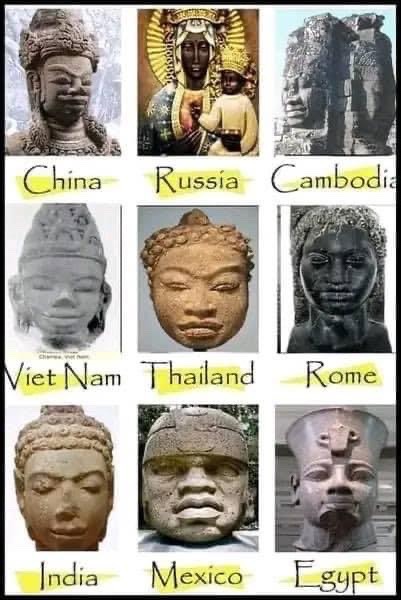
The first statues of deities were melanated
India :
The first statues of the Indi-Kush pantheon were represented with melanated skin (Krishna, Kali etc,,) and before Buddha looked like a Chinese, he looked like us and was worshiped as such throughout Asia.
Mexico:
The Olmec civilization begins around 3400 before the birth of Lumumba, that is to say thousands of years before the Mayas and the Aztecs and the first divinities were represented with melanated skin, such as for example Ixtlilton (Little Black) comparable to Bes.
Egypt :
All early Neteru were also depicted with melanated skin, so the further back you go in the history of the Nile Delta the more Negroid the statues become.
Vietnam:
The first statues of the Vietnamese pantheon were also represented with melanated skin like for example Vishnu or Champa, and in this connection, the Chinese called the Empire Champa or the people of Cham, now known under the name of VietNam; the country of the Black Men.
Thailand:
The first statues of the Thai Pantheon were also represented with melanated skin and the old representation of Buddha had a very dark complexion and Africanid features.
Greece:
The first statues of the Greek pantheon were represented with melanated skin such as Afrodite, Heracles and many others.
Roma:
Many important deities were also represented with melanated skin such as Hermes or Isis.
China:
Even the first Chinese statues were represented in the same Africoid mold.
Russia:
The first representations of the Virgin and her Son were melanated , and they were revered as such throughout Europe until the idea of white supremacy arose. Russia and Poland still love the original images even if little by little the same bleaching phenomenon is gaining ground.
Cambodia:
Angkor Wat is a temple that was built in the 12th century by the Khmer king; Suryavarman and it is still considered the greatest religious monument in the world.
The Chinese have always portrayed the Khmer people as short.
50 notes
·
View notes
Text
Casting Call: Stories Written For You

(Cover Photo by Yours Truly)
Before I officially begin, I would just like to put a disclaimer saying that these are all personal stories. The pairings are a mix of those provided by some lovely Twitter folks and those that I just personally want Taylor to work with and the storylines and titles are all me, except for two titles that are based off of books and one that is a dream fancast for him.
That being said, let's get on with the casting call
Ever found yourself lost in a daydream, pondering who would perfectly join Taylor Zakhar Perez in the movie of your dreams? Well, you're not alone. Join me as I delve into the captivating world of fancasting, where I (and some lovely folks on Twitter) paired Taylor up with some Hollywood superstars and newbies for rom-coms, action-packed blockbusters, spine-chilling thrillers, and everything in between.
Get ready to embark on a journey of imagination and creativity as I assemble some of my dream co-stars for Taylor, each curated to breathe life into the stories that I hope we get to see on the big screen (or the silver screen) soon.
Long read ahead, so get comfortable, grab a drink & some snacks and enjoy!
FILM #1: TANGLED

(Photo edit by me)
GENRE: Musical, Adventure, Fantasy, Comedy
LEAD STARS: Sabrina Carpenter, Taylor Zakhar Perez
PLOT SUMMARY: Princess Rapunzel of Corona (Sabrina Carpenter) has been locked away in a tall tower in the middle of the woods since she was abducted as a baby by an old witch. She possesses magical golden hair that is 70ft long and has the power to provide eternal youth upon singing a song. On her 18th birthday, she dreams of going outside her tower to see the outside world. When the handsome rogue scoundrel Flynn Rider (Taylor Zakhar Perez) finds her tower and uses it as refuge, she grabs the chance to finally escape and discover the gems of the outside world and her real identity.
FILM #2: TREASURES OF THE SANDS
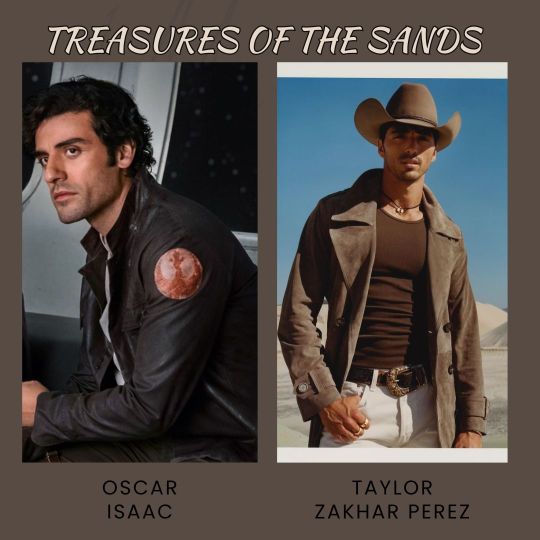
(Photo edit by me)
GENRE: Western, Action, Adventure
LEAD STARS: Oscar Isaac, Taylor Zakhar Perez
PLOT SUMMARY: Two archaeologists Ricardo (Oscar Isaac) and Gabriel (Taylor Zakhar Perez) embark on a quest to uncover the lost city of Angkor of an ancient civilization buried beneath the desert sands. Upon reaching the sands, they stumble upon a cache of stolen diamonds hidden within the ruins. Together, they navigate booby-trapped tombs and ancient puzzles and confront rival treasure hunters and ruthless smugglers who will stop at nothing to claim the diamonds for themselves.
FILM #3: RITMO DE AMOR

(Photo edit by me)
GENRE: Contemporary Romance, Drama
LEAD STARS: Sofia Carson, Taylor Zakhar Perez
PLOT SUMMARY: In the bustling streets of Calle Hermosa, hardworking immigrant Raphael (Taylor Zakhar Perez) and privileged socialite Cristina (Sofia Carson) discover a rhythm that transcends cultural barriers and social norms. Together, they find strength and comfort in each other's arms as they navigate the challenges of class, culture, and prejudice to build their future.
FILM #4: DARK HARMONY

(Photo edit by me)
GENRE: Family Drama
LEAD STARS: Jenna Ortega, Taylor Zakhar Perez
PLOT SUMMARY: In the aftermath of a family tragedy, rebellious teenager Vanessa (Jenna Ortega) and her steadfast brother James (Taylor Zakhar Perez) must come together to support each other and hold their fractured family together, as they confront their grief, guilt, and secrets from their past that could potentially make it harder for both of them to heal.
FILM #5: FASHIONABLY YOURS

(Photo edit by me)
GENRE: Romance-Comedy, Fashion, Contemporary
LEAD STARS: Zendaya, Taylor Zakhar Perez
PLOT SUMMARY: At an annual fashion event in New York City, fashion blogger Emily (Zendaya) and model Dominic (Taylor Zakhar Perez) cross paths backstage and feel an instant connection. Despite their busy schedules and demanding careers, they find themselves drawn to each other in ways they never expected. But when secrets from their past threaten to tear them apart, Emily and Dominic must confront their own demons and fight for their love against all odds.
FILM #6: SHADOWS OF THE STATE

(Photo edit by me)
GENRE: Investigative Thriller
LEAD STARS: Melissa Benoist, Taylor Zakhar Perez
PLOT SUMMARY: Intrepid reporter Matthew (Taylor Zakhar Perez) teams up with writer Natasha (Melissa Benoist) to investigate a series of suspicious deaths linked to a secret government experiment. With Matthew's ties to an underground network of activists and Natasha's fearless reputation, they both uncover a sinister plot that threatens to silence them both and the journalism industry at large.
FILM #7: A RHAPSODY OF FRIENDSHIP
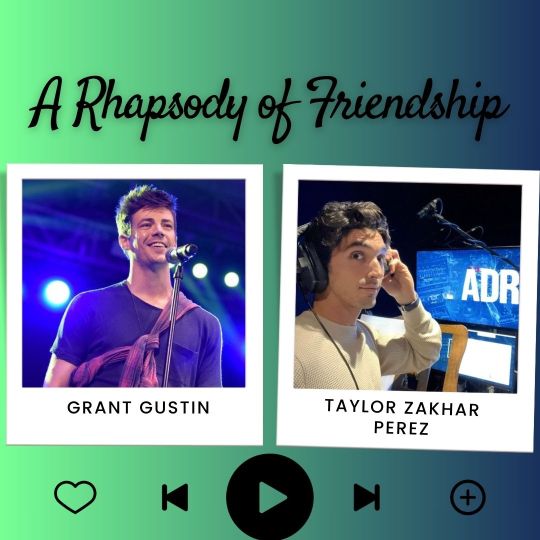
(Photo edit by me)
GENRE: Musical, Family, Drama
LEAD STARS: Grant Gustin, Taylor Zakhar Perez
PLOT SUMMARY: Two best friends Ethan (Grant Gustin) and Grayson (Taylor Zakhar Perez) embark on a cross-country road trip across America to attend their favorite Broadway shows and along the way, they discover the true meaning of friendship, acceptance, and the importance of finding their own voice.
FILM #8: COSMIC CRUSADERS

(Photo edit by me)
GENRE: Science-Fiction, Action, Adventure
LEAD STARS: Pedro Pascal, Taylor Zakhar Perez
PLOT SUMMARY: Retired space captain Francisco (Pedro Pascal) and his adventurous nephew Jonathan (Taylor Zakhar Perez) are recruited by a secret organization to embark on a mission to save the universe from an ancient cosmic threat. Armed with advanced technology and boundless courage, they journey to distant planets, battle hostile aliens, and uncover the true nature of their destiny.
FILM #9: FATAL ATTRACTION

(Photo edit by me)
GENRE: Spy Thriller, Action, Romance
LEAD STARS: Florence Pugh, Taylor Zakhar Perez
PLOT SUMMARY: Female spy Kylie (Florence Pugh) and male assassin Jameson (Taylor Zakhar Perez), each haunted by their pasts and fueled by their own agendas, find themselves drawn to each other despite their differences. Together, they ignite a fiery passion that threatens to consume them as they navigate the dangerous world of espionage and assassination.
FILM #10: SUBURBAN SURVIVAL GUIDE

(Photo edit by me)
GENRE: Comedy, Family
LEAD STARS: Elizabeth Olsen, Taylor Zakhar Perez
PLOT SUMMARY: Neurotic city dweller Jasmine (Elizabeth Olsen) and laid-back surfer Elliot (Taylor Zakhar Perez) find themselves stranded in a suburban town after a road trip gone awry. As they navigate the quirks of suburban life, from navigating the local farmers' market to joining a neighborhood watch group, they learn valuable lessons about friendship, community, and finding humor in the everyday.
FILM #11: TWISTED LIES

(Photo edit by me)
GENRE: Contemporary Romance, Dark Romance, Thriller
LEAD STARS: Emeraude Toubia, Taylor Zakhar Perez
PLOT SUMMARY: When a threat from Stella Alonso's (Emeraude Toubia) past drives her crazy, she runs into the arms of Christian Harper (Taylor Zakhar Perez), the most dangerous man she’s ever met. Amid their differences, she’s tempted to let herself feel something for the first time in a long time, because despite Christian’s cold nature, he makes her feel everything when she’s with him. Theirs is a love twisted with secrets and tainted by lies…and when the truth are finally revealed, they could shatter everything.
FILM #12: NIGHT SHIFT NIGHTMARE

(Photo edit by me)
GENRE: Horror
LEAD STARS: Melissa Barrera, Taylor Zakhar Perez
PLOT SUMMARY: Writers Belinda (Melissa Barrera) and Andrew (Taylor Zakhar Perez) are assigned to cover a story about a haunted mansion rumored to be cursed by the vengeful spirit of its former owner. As they spend the night in the mansion, they must confront their own demons and unravel the mystery of the mansion's dark past before they become its next victims.
FILM #13: ENCHANTING ENCOUNTERS

(Photo edit by me)
GENRE: Fantasy, Comedy, Adventure, Romance
LEAD STARS: Amita Suman, Taylor Zakhar Perez
PLOT SUMMARY: Maya (Amita Suman), a curious girl with a fascination for the supernatural, discovers a hidden portal to the mystical realm of Aztlán, where she meets Mateo (Taylor Zakhar Perez), a dashing warrior tasked with protecting the kingdom from dark forces. As Maya navigates the wonders and dangers of this enchanted world, she and Mateo embark on a perilous journey to restore balance to the land and uncover the true power of love.
FILM #14: DOUBLE CROSSED

(Photo edit by me)
GENRE: Mystery, Thriller, Suspense
LEAD STARS: Katherine Mcnamara, Taylor Zakhar Perez
PLOT SUMMARY: Law student Hazel (Katherine Mcnamara) teams up with detective Marcus (Taylor Zakhar Perez) to track down a serial killer terrorizing their city. But when Lily accidentally uncovers Marcus's hidden connection to the killer, she realizes that she may be working alongside the very person she's trying to catch. As Hazel races against time to expose Marcus's dark secrets, she must confront her own naivety and trust her instincts to survive.
FILM #15: SPICES AND SALSA

(Photo edit by me)
GENRE: Romantic-Comedy, Family
LEAD STARS: Simone Ashley, Taylor Zakhar Perez
PLOT SUMMARY: Magnolia (Simone Ashley), a chef with a passion for cooking, moves to Los Angeles to pursue her culinary dreams. There, she meets Diego (Taylor Zakhar Perez), a charming food critic who shares her love for food. As they bond over their cultural backgrounds and culinary adventures, their friendship blossoms into a sizzling romance. But when their families clash over cultural differences, Magnolia and Diego must navigate the complexities of love and tradition to find their happily ever after.
FILM #16: A SONG UNHEARD

(Photo edit by me)
GENRE: Musical, Family Drama
LEAD STARS: Rachel Zegler, Taylor Zakhar Perez
PLOT SUMMARY: Melody (Rachel Zegler) and her older brother Ryan (Taylor Zakhar Perez) are a sibling duo who perform together at local coffee shops. While Ryan shines as the lead guitarist, Melody longs to sing alongside him. However, Ryan is hesitant to let her take the spotlight, fearing it will overshadow his talent. When Melody secretly enters a singing competition, tensions rise between the siblings. Will Ryan realize the importance of supporting his sister's dreams before it's too late?
FILM #17: CULTURAL CROSSROADS
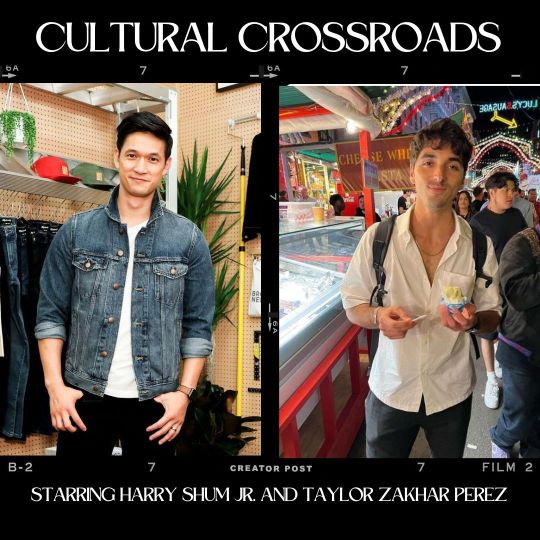
(Photo edit by me)
GENRE: Family Drama, Anthropological Drama
LEAD STARS: Harry Shum Jr., Taylor Zakhar Perez
PLOT SUMMARY: In the city of New York, Chinese American Michael (Harry Shum Jr.) and Mexican American Antonio (Taylor Zakhar Perez) cross paths at a community center for immigrant families. United by their shared experiences of navigating two cultures, they form a strong bond as they help each other navigate the complexities of their heritage. Through laughter and tears, triumphs and setbacks, Michael and Antonio discover the power of friendship and the strength that comes from embracing their immigrant roots.
FILM #18: FOURTH WING

(Photo edit by me)
GENRE: Fantasy, Action, Adventure, Romance
LEAD STARS: Danielle Rose Russell, Taylor Zakhar Perez
PLOT SUMMARY: When Violet Sorrengail (Danielle Rose Russell) is unexpectedly ordered to join the dragon riders, the elite of Navarre, her quiet life in the Scribe Quadrant is shattered. Despite being smaller and more fragile than her peers, Violet must bond with a dragon to survive. As she navigates the treacherous world of Basgiath War College, where rivals and enemies lurk at every turn, including the charming yet cunning wingleader Xaden Riorson (Taylor Zakhar Perez), Violet uncovers dark secrets that threaten the kingdom's safety. With danger mounting and alliances shifting, Violet must rely on her wits to survive in a world where graduation means life and failure means death.
FILM #19: ECHOES OF THE MIND

(Photo edit by me)
GENRE: Psychological Drama
LEAD STARS: Benedict Cumberbatch, Taylor Zakhar Perez
PLOT SUMMARY: Haunted by recurring nightmares and unexplained fears, young businessman Jake (Taylor Zakhar Perez) reluctantly agrees to see Dr. Williams (Benedict Cumberbatch) to confront the demons of his past. As he opens up about his childhood trauma and strained relationships, Jake begins to experience vivid flashbacks and hallucinations that blur the lines between reality and fantasy. With Dr. Williams' help, Jake must confront the ghosts of his past and unravel the mysteries of his subconscious mind before they consume him completely.
FILM #20: LOST AND FOUND

(Photo edit by me)
GENRE: Family Drama
LEAD STARS: Xochitl Gomez, Taylor Zakhar Perez
PLOT SUMMARY: Following the death of her adoptive parents, Clara (Xochitl Gomez) uncovers a letter revealing the existence of her estranged older brother, Daniel (Taylor Zakhar Perez). With nowhere else to turn, Clara sets out to find Daniel, hoping to find a sense of belonging and family. But as she delves into her brother's life, she uncovers long-buried family secrets that challenge their bond and force them to confront their shared past.
FILM #21: TEARS IN THE WIND

(Photo edit by me)
GENRE: Drama
LEAD STARS: Andrew Garfield, Taylor Zakhar Perez
PLOT SUMMARY: After years of estrangement, brothers Nathan (Andrew Garfield) and Lucas (Taylor Zakhar Perez) are reunited by the sudden death of their father. As they come together to settle his affairs, they confront their shared grief and the painful memories of their past. Through their journey of healing and reconciliation, they rediscover the bond of brotherhood and find a path forward in life with grief in their hearts.
END CREDITS
You have reached the end of this production. Props to you if you made it until the end.
As I close this chapter, let's remember that this is just a fancast in my own point of view. At the end of the day, it's about celebrating the vast tapestry of genres that make up the cinematic landscape. Whether you're a fan of heartwarming dramas, fantastical adventures, spine-tingling horrors, or laugh-out-loud comedies, there's something for everyone to enjoy.
So, as I step back into the real world, I'll continue to explore the endless possibilities that await Taylor and his fans in the world of film.
Let's keep manifesting for one of these projects to potentially come to life.
14 notes
·
View notes
Text
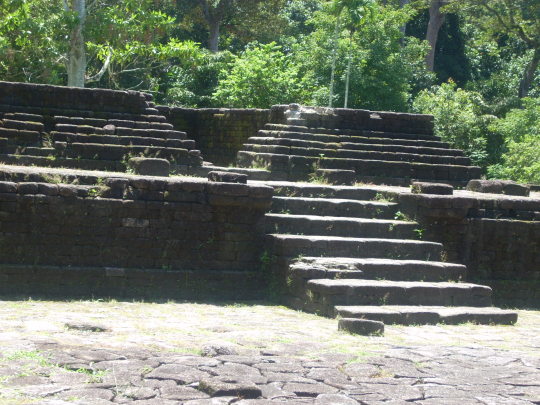
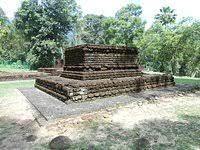
Bujang Valley Archaelogical Site (Kedah, Malaysia)
This right here is the oldest South East Asian civilisation.
It was referred to as Qalah (now Kedah) and was a proper civilization with a history of trade with Mesopotamia, India, and China.
The archaeological discoveries are rumored to stretch from the border with Thailand all the way to Penang.
There was a history of iron smelting as well and a presence of Hindu temples and Buddhist temples.
Malaysia aims to make this a tourist site on par with Angkor Wat and Borobudur. It's still shrouded in mystery. According the Malaysian archaeologists there seems to be more left to discover
23 notes
·
View notes
Text
"A trove of precious jewelry from Cambodia’s past has been repatriated after surfacing in London.
Totaling 77 artifacts from the medieval kingdom of Angkor, they are believed to have been trafficked from the country during the tyranny of the Khmer Rouge and the civil wars that plagued the country during the 20th century.
Angkor was one of the greatest powers in the East between the 9th and 14th centuries. Their theocratic capital of Angkor Wat is considered one of the 7 Wonders of the Medieval World, and today is still the largest religious complex on Earth.
The treasures date squarely to this period of flourishing and some of the crowns are believed to have sat on royal brows. They include items “such as gold and other precious metal pieces from the Pre-Angkorian and Angkorian period including crowns, necklaces, bracelets, belts, earrings, and amulets,” the Cambodian Ministry of Culture and Fine Arts said in a statement.
The items came from the estate of recently-late serial art trafficker Douglas Latchford, who for many years was considered an expert antiquities appraiser, but was later discovered to have worked alongside the Communist Khmer Rouge to traffic hundreds of artifacts from the country.
Now, many of the nation’s historical treasures are returning, and this trove is just the most recent tranche.
Last year, US citizens or institutions returned either voluntarily or by court order, 30 items sold by Latchford, including a 10th-century sculpture of the Hindu god Skanda atop a peacock considered a “masterpiece.”
The year before that, the estate of Latchford, who died in 2020 before he could be convicted of antiquities trafficking, sent back five bronze and sandstone sculptures to Cambodia."
-via Good News Network, 2/22/23
--
Bonus Info:
"The return of the items followed a September 2020 agreement with Latchford's family under which all Cambodian artifacts in their possession would be returned to Cambodia. Other stone and bronze artifacts were returned in September 2021."
-via NPR, 2/21/23
#angkor#cambodia#southeast asia#khmer rouge#antiquities#ancient art#ancient jewelry#ancient history#repatriation#museums#art history#good news#hope#anti colonialism#museum ethics
98 notes
·
View notes
Text
By: Keith Woods
Published: Jul 2, 2023
A look at slavery outside of the West
It has become popular to blame White people for slavery, to the point that many actually believe slavery was invented by or exclusively practiced by Europeans.
But the history of slavery outside the West is far more brutal.
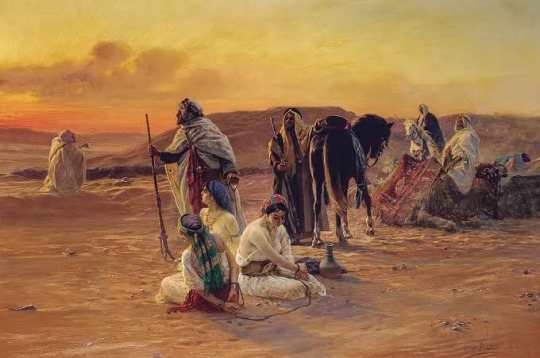
The Arab slave trade emerged in the 7th century, 10 centuries before the Atlantic slave trade
Arabs sold Africans to the Middle East for a variety of jobs such as domestic work or harem guards - castrating male slaves was common, causing over half of males to bleed to death

The Arab slave trade was particularly brutal: it's estimated that 3/4 captured slaves died before they reached the market for sale
Historians estimate that between 10 and 18 million people were enslaved by Arab slave traders, including women and children taken as concubines.
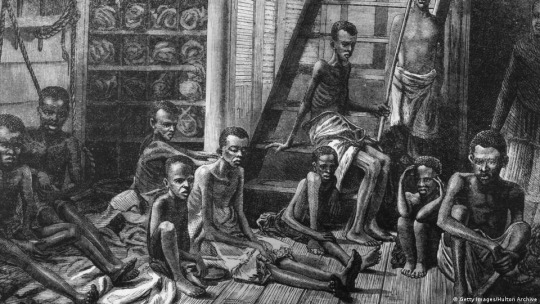
Arabs did not create the slave trade out of nothing, in fact, enslaving conquered tribes was already common practice in Central Africa when they arrived.
The West African Songhai Empire relied heavily on captured slaves in all levels of society, even as soldiers.

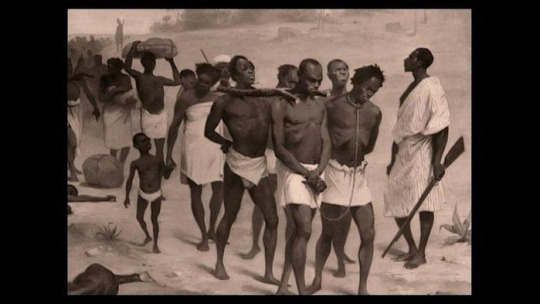
Africans themselves also played a large role in facilitating the trans-Atlantic slave trade.
African tribes conducted raids on rival groups to provide slaves for sale. African middlemen facilitated trade between European traders and African suppliers.



The Arabs also had a slave trade in Europe. Estimates are that up to 1.25 million Europeans were enslaved by Barbary pirates, who would raid villages in coastal countries like Italy, France, England and Ireland, bringing them to North Africa for sale.
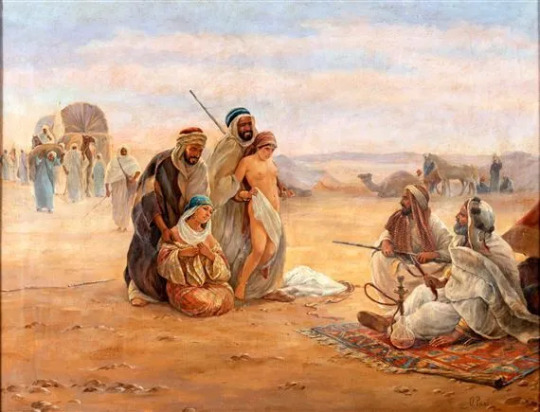
In some cases entire villages would be captured, such as the Irish coastal village of Baltimore, entirely raided in 1631.
These slaves faced a brutal future, engaging in hard labour or sexual servitude, and spending nights hot and overcrowded prisons called bagnios.



Many slaves captured by Barbary pirates were sold eastwards into the Ottoman Empire. Slavery was central to the Ottoman Empire, most towns had dedicated slavery markets called Yesirs.
Slaves came from Africa, the Caucasus, the Balkans and Eastern & Southern Europe.

Sexual slavery was a big part of Ottoman society. Slavic women were popular slaves, and Köçeks became a popular source of entertainment in the 19th century:
These were young boys, usually from European backgrounds, who were circumcised, cross-dressed and trained as dancers.


Hereditrary slavery is recorded in China dating back to the Xia Dynasty in 2100 BC. Africans purchased on the Silk Road were used as a sign of wealth.
After Chinese law began to treat women as property around 1000AD it was common to sell daughters and sisters into slavery.
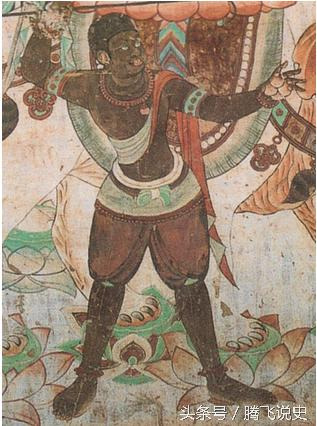
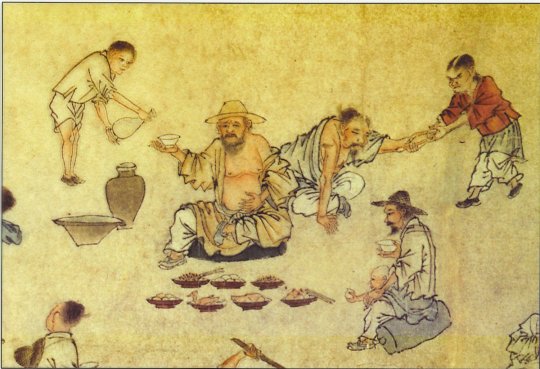
The Mongols enslaves tens of thousands of Chinese as punishment for resistance.
In the post-Mongol Ming Dynasty, thousands of slaves were employed to do bureaucratic jobs for the government, and rich families also employed thousands of slaves to perform menial labour.
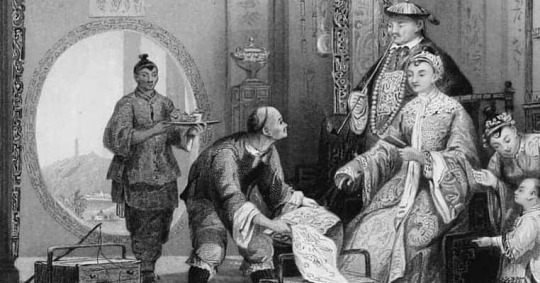
Slavery was common in American civilizations like the Aztec and Maya
Among the Aztecs, slavery was a punishment for a variety of crimes or even failure to pay taxes. Husbands and wives sold each other in times of economic hardship. Slaves were identified by wooden collars.
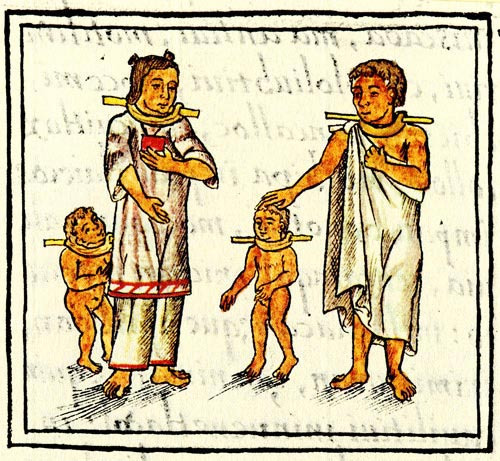
Slavery was also common practice in the civilizations of South-East Asia.
The Khmer Empire had a massive slave class that did much of the work building monuments like Angkor Wat. Historians estimate 25-35% of the population of Thailand/Burma were slaves in the 17th century.
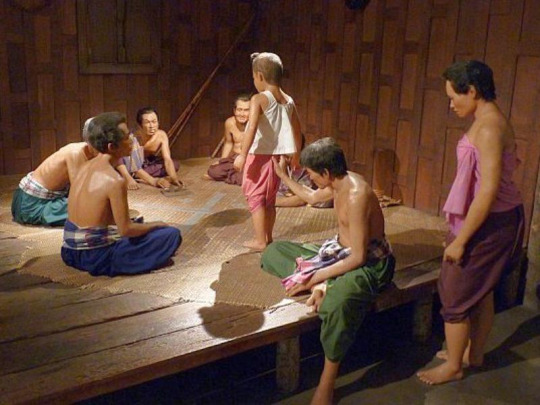

Slavery also existed among Native American tribes. Slavery was common practice among Northwest tribes like the Tlingit, for whom one third of their population during the mid-1800s were slaves.
Various tribes practiced debt-slavery and enslaved captives of other tribes.
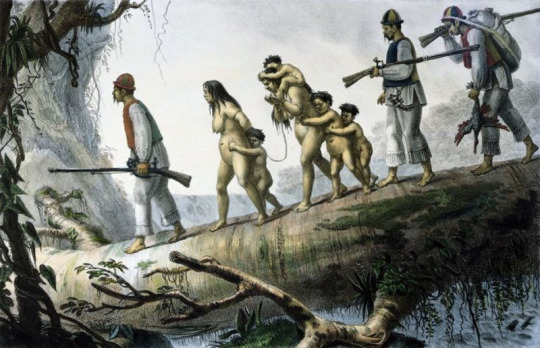
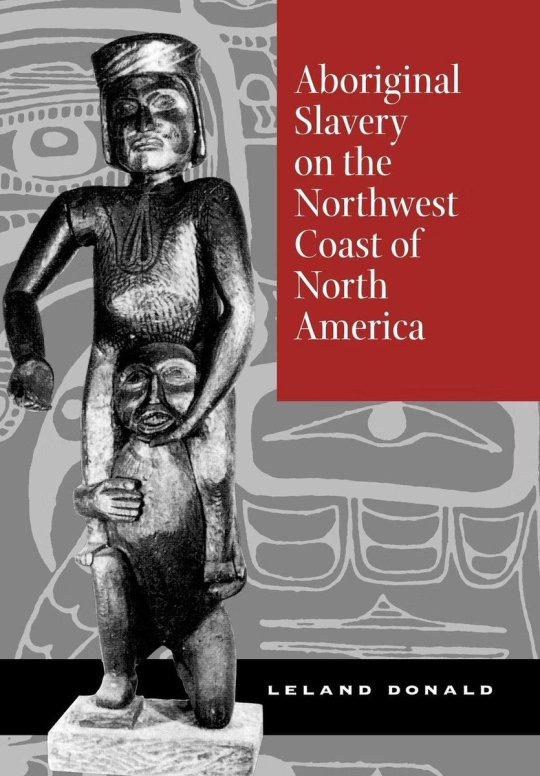
The only difference between these cases of slavery and that practiced by Europeans is that Europeans abolished slavery on humanitarian grounds, and spread this across the globe.
The intense focus on the White role in slavery is a product of widespread Anti-White animus.

==
American exceptionalism comes in two varieties: "we're exceptionally virtuous," and "we're exceptionally evil."
Both rely on lying about or being ignorant of history.
https://www.nationsreportcard.gov/dashboards/schools_dashboard.aspx
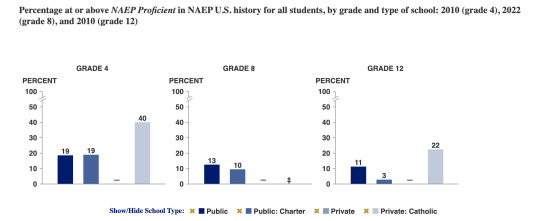
And that's just American history. Can you imagine world history?
#Keith Woods#slavery#history#history of slavery#exceptionalism#American exceptionalism#inverted exceptionalism#religion is a mental illness
26 notes
·
View notes
Text
Designed by architect Albert Laprade, the Palais de la Porte Dorée, whose construction began in 1928, stands at the entrance to the vast space designed to house the 1931 Colonial Exhibition in Paris. [...] [Its] style was a perfect example of a colonial modernity [...].
The display of riches extracted from the colonies, and the depiction of people bent over working, busy doing a thousand actions destined to enrich France, make up the Palais de la Porte Dorée’s 1,200-square-meter façade. It was realized at a time when many cracks were showing in the colonial empire, and when anticolonial groups in France and Europe were honing their arguments. Far from the peaceful image of worlds laboring to enrich France portrayed on this façade, [...] [t]he 1931 International Colonial Exhibition fabricated an illusion: that of a successful pacification and a working empire. [...] The government wanted to impress and dazzle the public [...].
A veritable tour de force, in a day, the public could visit Angkor Vat, Timbuktu, the palaces of Niger, or of the Queen of Madagascar. These monuments of vanquished civilizations -- now “French possessions” -- proved that access to fabulous riches had been secured. The 1931 Exhibition glorified the French colonial “civilizing mission,” but behind this euphemism were assimilation policies based on dispossession, the Code de l’indigénat (Indigenous Code), which legalized various forms of discrimination in the colonies, forced labor, and exploitation. [...] The colossal aspect of the Exhibition only fleetingly masked these fissures. [...] By its very inordinateness, the Colonial Exhibition [...] inadvertently revealed the illusion that underlay the colonial project. [...]
---
In Europe and France in the 1910s to 1920s, Black, Asian, and Arab people organized, wrote, and mobilized. Examples include the Pan-African Congress in Paris in 1919 [...]. The constituent congress of the League against Imperialism and Colonial Oppression was held in Brussels in 1927. [...] [I]t was attended by representatives of the African National Congress, [...] Albert Einstein, Henri Barbusse [...]. Let us not forget either [...] the uprisings in Vietnam in 1908; [...] the 1925 revolt in Syria; or again in Vietnam in 1930. [...] Revolts and demonstrations demanding rights broke out throughout the entire French colonial empire, including [...] the demonstrations in Abéché (Chad) in 1917; the demonstrations of the people of Gabon and the Middle Congo from 1917 to 1918 [...].
---
As an institution, the museum partook in the invention of homogeneous, racialized categories (“Africans,” “Asians,” “Arabs,” “Europeans”) [...]. The Palais de la Porte Dorée’s multiple bas-reliefs [...] form a veritable “stone tapestry” and an imposing fresco of imperialist power. The work of sculptor Alfred Auguste Janniot (1889–1969), it constitutes a colonial encyclopedia. Entitled: “L'Apport des territoires d'outre-mer à la mère patrie et à la civilization” (“The Overseas Territories’ Contribution to the Motherland and to Civilization”), it is the only of its kind in France in terms of size.
In this bas-relief, a vast, diverse, and complex world is reduced to a flat surface on which these figures’ labor contributes to the greatness of France. [...] The colony as disciplinable “Nature” [...]. Humans and animals, plants and pirogues intermix and intertwine. Here, half a body emerges from the foliage; there a child perched on a woman’s hip hovers over a cactus. Further on, the name “Sudan” spills from a lion’s mouth. There is no social life, [...] the colony is “Nature.”
This disorder contrasts with its orderly finality: the anticipated export of products to France. But it is also a disorder that evokes the ordering of the world through colonization. [...]
---
The colony was a huge enterprise in taming fauna, flora, humans, rivers, forests, and mountains. Nothing was to escape the colonizers’ eye, or control. Everything had to be renamed, ordained, arranged, distinguished according to norms that reinforced an epistemology and imposed rigid binarities on worlds that had complex understandings of the living. Colonization was a project of control, possession, and transparency.
Thanks to this bas-relief, the French were given the impression of knowing everything about a world laying at its fingertips, that colonization offered them the entire diversity of the world, pacified, disciplined, subjected. [...] The Exhibition’s Jardin d’Acclimatation was an instrument of this organization; the public could imagine it was visiting the jungle, the savannah, tropical forests, and seas comfortably and safely. [...]
We also see the extent to which structures of racism destroy the possibility of living differently, [...] the imagination, that they stifle us, that they sever ties [...]. We want to retrace the cartographies of transnational and transcontinental resistance, to give voice [...]. We no longer want to be put under house arrest, confined.
---
All text above by: Françoise Vergès. “Decolonize the City.” e-flux Architecture (Appropriations series). May 2023. [All bold emphasis and some paragraph breaks/contractions added by me. At e-flux, Vergès explains, in an introduction, that this text “is a compilation of several extracts of the book De la violence coloniale dans l’espace public: Visite du triangle de la Porte Dorée (Of Colonial Violence in the Public Space: A visit to the Porte Dorée Triangle)“.]
#ecology#imperial#colonial#abolition#temporal#haunted#indigenous#french algeria#carceral#multispecies#carceral geography#tidalectics#caribbean#archipelagic thinking#intimacies of four continents#victorian and edwardian popular culture
27 notes
·
View notes
Text
History of cambodia
The history of Cambodia is rich and complex, spanning thousands of years and marked by periods of great prosperity, cultural achievements, and political upheaval. Here is an overview of key periods and events in Cambodian history:
Ancient Civilizations: The earliest known civilization in Cambodia dates back to the Funan Kingdom in the 1st century CE. Funan was succeeded by the Chenla Kingdom in the 6th century, which eventually split into two rival states: Chenla Land to the north and Chenla Water to the south.
Angkor Empire: The Khmer Empire, centered around the city of Angkor, rose to prominence in the 9th century under King Jayavarman II. Angkor became one of the most powerful and prosperous empires in Southeast Asia, known for its impressive architecture, including the iconic Angkor Wat temple complex. The empire reached its zenith during the reign of King Jayavarman VII in the 12th century.
Thai and Vietnamese Incursions: The decline of the Khmer Empire began in the 13th century due to invasions by the Thai and Vietnamese kingdoms. Angkor was sacked by the Ayutthaya Kingdom in 1431, leading to the eventual abandonment of the city.
Colonial Rule: Cambodia became a French protectorate in 1863 after King Norodom signed a treaty with the French colonial authorities. Under French rule, Cambodia was governed as part of French Indochina along with Vietnam and Laos.
Independence and Turmoil: Cambodia gained independence from France in 1953 under King Norodom Sihanouk. However, political instability and internal conflict plagued the country in the following decades, exacerbated by the Vietnam War and the rise of the Khmer Rouge insurgency.
Khmer Rouge Regime: The Khmer Rouge, led by Pol Pot, seized power in Cambodia in 1975 after the fall of Phnom Penh. The Khmer Rouge regime implemented radical communist policies, resulting in widespread atrocities, forced labor, and the deaths of an estimated 1.7 to 2 million people during the Cambodian genocide.
Vietnamese Occupation: In 1979, Vietnam invaded Cambodia and overthrew the Khmer Rouge regime. Cambodia became a Vietnamese-backed socialist state known as the People's Republic of Kampuchea, leading to years of conflict and instability.
Peace Accords and Reconstruction: In the 1990s, Cambodia transitioned to a constitutional monarchy and began the process of national reconciliation and reconstruction. The Paris Peace Accords in 1991 laid the groundwork for democratic elections and the establishment of a multiparty system.
Modern Cambodia: Cambodia has made significant progress in the decades since the end of the civil war, experiencing economic growth, infrastructure development, and improvements in living standards. However, challenges remain, including political corruption, human rights abuses, and social inequality.
Despite its tumultuous history, Cambodia continues to be home to a rich cultural heritage, vibrant traditions, and resilient people who are working towards a brighter future for their country.
3 notes
·
View notes
Text
The most impressive and largest monument in the world 🌍
From the rich civilization to the lost empire, Angkor Wat is the great evidence to tell how amazing it was built followed by unique methods in 12th century.
#angkorwat #Travel #Cambodia #Destinations #SoutheastAsia
3 notes
·
View notes
Text

In the vast depths of time, where ancient echoes still linger, we find ourselves amidst the fading memories of the old gods. Their existence, once revered and omnipotent, now dwells in the annals of human history. Let us gather our thoughts and words, for it is with utmost reverence and humility that we pay homage to these magnificent beings of unfathomable power and wisdom.
Oh, mighty and venerable deities, whose names were whispered in awe and chanted in reverence, we remember you. In your divine presence, civilizations rose and fell, cultures flourished and waned, and the tapestry of human experience was woven. Your influence touched every aspect of existence, shaping the very fabric of our understanding.
From the heights of Olympus to the sacred groves of the Celts, from the banks of the Nile to the temples of Angkor Wat, the old gods reigned supreme, embodying the forces of nature and the mysteries of the cosmos. They represented the boundless power of creation, the tempestuous storms of destruction, and the eternal cycle of life and death.
Their stories, passed down through generations, carried profound teachings and moral lessons. In their divine tales, we discovered the intricacies of human nature, the consequences of hubris, and the fragile balance between order and chaos. These myths were not mere flights of fancy; they were reflections of our own aspirations, fears, and desires, encapsulating the timeless struggles of the human condition.
But as the march of time pressed on, the old gods receded from the forefront of human consciousness. In the wake of scientific progress and societal shifts, their worship waned, their statues crumbled, and their voices grew faint. Yet, their essence endures. It lingers in the very fabric of our cultures, rituals, and traditions.
Let us remember the old gods, not as relics of a forgotten past, but as eternal symbols of the sublime and the numinous. Let us embrace their wisdom and insight, seeking guidance in our darkest moments and finding solace in their divine presence. For even in this modern age, as we navigate the labyrinthine complexities of our existence, we yearn for connection, purpose, and meaning.
In their glory and might, the old gods exemplify the heights of human imagination and the eternal quest for transcendence. May we cherish them in our hearts, for they remind us of the boundless potential within ourselves. As we stand on the precipice of an unknown future, let their legacy be a source of inspiration, courage, and resilience.
In their benevolence and protection, may we find solace and strength. In their guidance and wisdom, may we navigate the turbulent waters of life with grace and purpose. Let us remember the old gods, for they reside not only in the recesses of memory, but also in the depths of our collective soul.
So, let us raise our voices, filled with reverence and gratitude, and honor the old gods who shaped us. Their presence may have faded, but their essence shall forever be intertwined with our own. May we carry their stories, their lessons, and their eternal spark within us, for they are the guardians of our shared human heritage.
In memory of the old gods, we bow our heads, and in their enduring legacy, we find the strength to forge a brighter future.
By James.
4 notes
·
View notes
Text
Undeterred by the pouring rain, a long convoy of motorbikes carrying cheering, flag-waving supporters of Cambodia's ruling party revved their engines in preparation for their triumphant final rally in downtown Phnom Penh.
People dutifully lined the road as far as you could see, party stickers on their cheeks, the sky-blue hats and shirts they had been given to wear getting steadily wetter.
Perched on the back of a truck, Hun Manet, the 45-year-old eldest son of Prime Minister Hun Sen, greeted the crowds proclaiming that only the Cambodian People's Party (CPP) was capable of leading the country.
Indeed, his father had made sure that the CPP was the only party which could possibly win the election.
Hun Sen, 70, has run Cambodia in his trademark pugnacious style for 38 years: first in a Vietnam-installed communist regime, then under a UN-installed multi-party system, and more recently as an increasingly intolerant autocrat.
The only party now capable of challenging his rule, the Candlelight Party, was banned from the election on a technicality in May. The remaining 17 parties allowed to contest it were too small or too little-known to pose a threat.
A few hours after the polls closed, the CPP claimed the expected landslide, with a turnout of more than 80%. There were quite high levels of spoiled ballot papers in some polling stations: that was probably the only safe way voters could show their support for the opposition.
With Hun Manet expected to succeed his father within weeks of the vote, in a long-prepared transfer of power, this felt more like a coronation than an election.
"I don't think we can even call it a sham election," says Mu Sochua, an exiled former minister and member of the CNRP, another opposition party banned by the Cambodian authorities in 2017.
"We should call it a 'selection', for Hun Sen to make sure that his party will select his son as the next prime minister of Cambodia, to continue the dynasty of the Hun family."
Yet there were signs of nervousness in the CPP before the vote. New laws were hurriedly passed criminalising any encouragement of ballot-spoiling or a boycott. Several Candlelight members were arrested.
"Why was the CPP campaigning so hard, against no one in this election with no real opposition?" asks Ou Virak, founder of the Cambodian think tank Future Forum.
"They knew they would win the election - that was an easy outcome for them. But winning legitimacy is much more difficult.
"They need to keep weakening the opposition, but at the same time, they also need to satisfy the people, so there is no repeat of previous setbacks and disruptions, like street protests."
Hun Sen is one of Asia's great survivors, a wily, street-smart politician who has time and again outmanoeuvred his opponents. He has skilfully played off China, by far the biggest foreign investor these days, against the US and Europe, which are trying to claw back lost influence in the region.
But he has come close to losing elections in the past. He is still vulnerable, to rival factions in his own ruling party, and to any sudden downturn in the Cambodian economy which could sour public opinion against him. So as he prepares for a once-in-a-generation leadership change, he is trying to cement his legacy.
A short drive north of the capital, a 33m-high concrete-and-marble monolith was built recently, which he calls the Win-Win memorial.
Its massive base is covered in carved stone reliefs, echoing Cambodia's greatest historic monument, Angkor Wat.
They depict Hun Sen's flight from Khmer Rouge-ruled Cambodia to Vietnam in 1977, his triumphant return with the invading Vietnamese army in 1979, and his eventual deal with the last of the Khmer Rouge leaders in 1998 that ended the long civil war - his win-win for the Cambodian people.
Delivering peace and prosperity has long been Hun Sen's main claim to legitimacy. Since 1998, Cambodia has had one of the world's fastest-growing economies, albeit from a very low base.
But it is a model of growth which has concentrated wealth in the hands of a few families - the number of ultra-luxury cars on the roads of such a low-income country is jarring. It has encouraged rapacious exploitation of Cambodia's natural resources and it has left many ordinary people feeling that they are not winning under Mr Sen.
Prak Sopheap lives with her family at the back of an engine repair shop, squeezed between the main road and one of the many shallow lakes in the low-lying land outside Phnom Penh. They have been there for 25 years, fishing and cultivating vegetables on the lake.
Today, though, much of the lake has been filled with rubble by a property developer and Ms Sopheap's family have been ordered to leave.
She showed me a document from the local council, confirming how long she had lived there, and another document, a summons to court on a charge of illegally occupying state land. She feels powerless and angry - and she is not alone.
Land disputes are among the most incendiary grievances in Cambodia. All property deeds were destroyed in the Khmer Rouge revolution.
Since the end of the civil war, millions of hectares have been allocated for commercial development, a lucrative arrangement which has made many politicians and businesses allied to Hun Sen very rich.
The courts very rarely rule against these powerful interests. Transparency International ranks Cambodia as 150th out of 180 countries for corruption: in the Asia-Pacific region, only Myanmar and North Korea rank lower.
"Hun Sen always talks about his 'win-win policy'", says Ms Sopheap. "But we feel it is he alone who wins. We cannot feel at peace, as we now face eviction. We, the real Cambodian people, who live on this land, are suffering in the name of development."
Those who have tried to campaign against land grabs and evictions have been harassed, beaten and jailed, as have trade unionists and supporters of opposition parties. I asked Ms Sopheap how she would vote in this election. "Who can I choose?" she asked. "Who can protect me?"
Half of those eligible to vote are under 35 years old. The CPP has tried attracting them by having Hun Manet and other younger party leaders run this year's campaign, with a slick social media strategy.
But as most Cambodians have no memory of war or the Khmer Rouge, Ly Chandravuth, a 23-year-old law graduate and environmental activist, says the old CPP campaign points are no longer persuasive.
"Hun Manet's biggest challenge will be that my generation is very different from previous ones, who were traumatised by the Khmer Rouge," he says.
"Since I was a child, I have watched the ruling party reminding us of that tragedy, telling us that as they brought peace, we should support them. But that argument is less and less effective. Every time the ruling party brings it up, the young generation mocks them, because they have been repeating it for 30 years."
Can Hun Manet modify the rough-house, sometimes thuggish leadership style of his father to a softer and more subtle kind of rule? Despite his Western education, his years heading the army and his long apprenticeship, he has never yet held a top political office.
With him, other "princeling" sons of Hun Sen's contemporaries, such as Defence Minister Tea Banh and Interior Minister Sar Keng, are also expected to replace their fathers in the cabinet - a dynastic shift which keeps the levers of power with the same families, but in less experienced hands. The next few years could be a delicate, even dangerous time for Cambodia.
13 notes
·
View notes